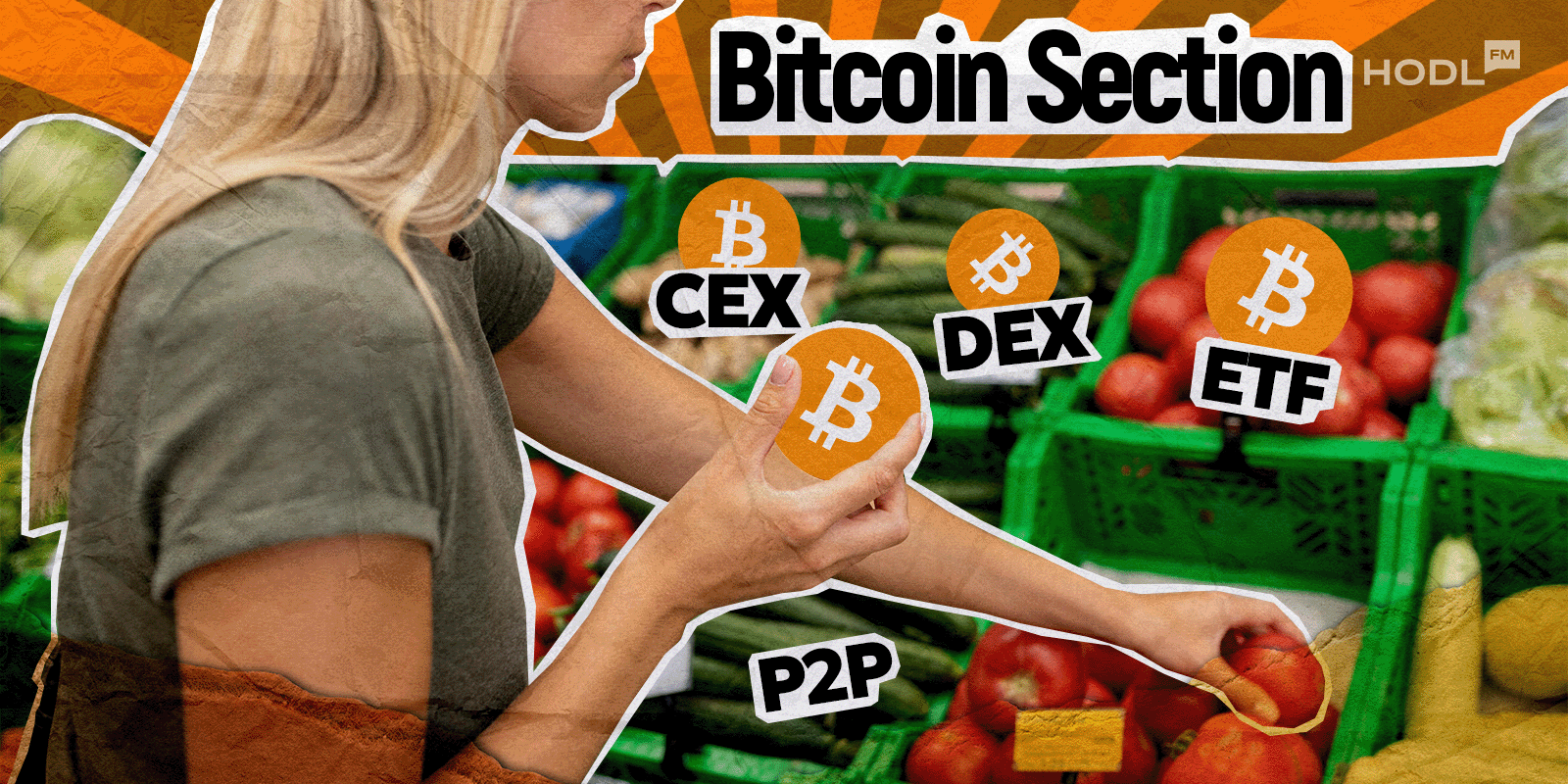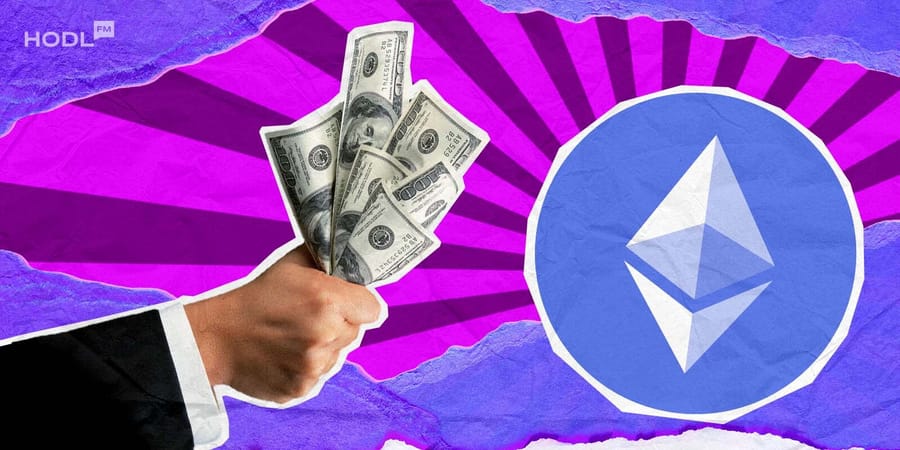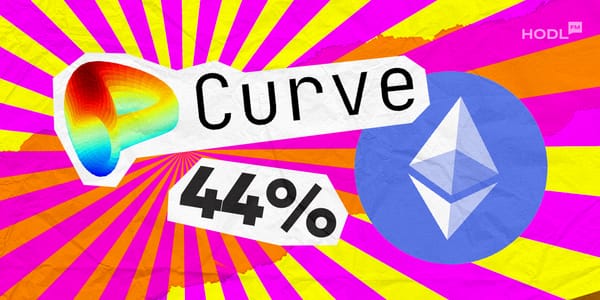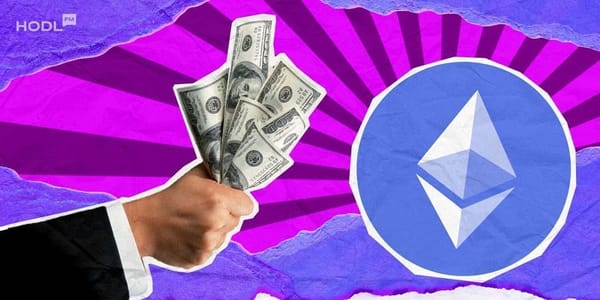When you buy a coin or token, you always start with fundamental analysis. What’s behind the project? Who are the developers? What’s their long-term vision?
Probably no other cryptocurrency has better answers to these questions than Ethereum. It's not only a coin, but maybe the most active and most reliable blockchain ever. Its developers, headed by Vitalik Buterin, seem more focused on improving Ethereum as a technology and ecosystem than worrying about the coin’s price.
In this article, we’ll cover all the known ways to buy ETH, including the cheapest and best options to suit your needs.
Why Buy Ethereum (ETH)?
Ethereum is the second-largest cryptocurrency by market cap. Besides, it currently hosts over 4,000 decentralized apps and processes over 20.1 million transactions a day. They called themselves the "World Computer" and the "Internet of Apps".
Ethereum has a public roadmap — a development plan that includes multiple phases with specific upgrades, forks, and improvements. Two weeks ago, Buterin announced a major simplification for Ethereum’s Layer-2 design.
Besides, in July 2025, Ether saw a price surge of over 50%! That’s after years of relatively slow and steady growth. It was caused by the launch of an ETH ETF, a financial product that allows investors to gain exposure to Ethereum through traditional markets without actually holding the crypto. Look at the ETH chart to see how it has changed.
And there are plenty of predictions suggesting that ETH could reach $6,000 by the end of the year or even $10,000.
How to Buy Ethereum
If you're looking to buy Ethereum (ETH), you have several options depending on your preferences and location. The most common way to purchase ETH is through centralized exchanges (CEXs). Other options include decentralized exchanges (DEXs), peer-to-peer (P2P) platforms, Ethereum ATMs, and banking apps. You can buy ETH online or at an ATM, with or without KYC, and either trust middlemen or avoid them.
Cryptocurrency Exchanges
Centralized Ethereum exchanges are the most common and the easiest way to buy Ethereum. At the very least, because you are sure to find acquaintances who have accounts on exchanges and who will be able to advise you.
You can buy ETH instantly on platforms like Coinbase, Binance, Kraken, and Gemini. Many allow you to buy ETH with a credit card or buy ETH with a debit card. And they actually represent the cheapest way to buy ETH. Took a look at the short compatible table:
Peer-to-Peer (P2P) Platforms
P2P platforms let users buy and sell Ethereum (ETH) directly from other traders. These platforms give you more control over how you trade and sometimes at lower fees than centralized exchanges.
Platforms like Best Wallet, and Bisq are popular for a reason. Escrow services hold the crypto safely during a P2P trade and release it to the buyer after the seller confirms payment. It protects both sides from scams. Always, make sure that the platform has it.
Among pros, you get more payment methods to choose from, potentially lower costs, and you can buy ETH with no KYC.
But there are downsides. There are a lot of scammers in this niche. And transactions can take longer because people transfer money to each other manually. And if something goes wrong, your options for resolving disputes may be limited.
Tip: Always check the platform’s name. Just Google it like this: “Is [Name] a scam?” If you see suspicious reviews, don’t trust the platform and stop any chatting.
Ethereum ATMs
Want to buy Ethereum instantly in person? Crypto ATMs make it possible and easy. These machines let you purchase ETH (and often other coins like Bitcoin) using cash or a debit card.
There are common crypto ATMs, and also there are separate Bitcoin ATMs and Ethereum ATMs.
You’ll find Ethereum ATMs in many major cities around the world — especially in the U.S., Canada, and parts of Europe. However, they’re still rare in some regions, especially across Africa, Asia, and South America.
Here’s how it works: you walk up to the machine, choose Ethereum, scan your wallet’s QR code, insert your cash or card, and the coin is sent straight to your Ethereum wallet. It’s that simple.
Tip: Use ATM locator tools like CoinATMRadar to find the nearest machine. Always double-check what coins it supports, what the fees are, and whether it requires verification before you go.
Are you asking, what wallet? To use a crypto ATM, you need a Web3 wallet. It’s a digital wallet that lets you store, send, and receive cryptocurrencies like ETH. Think of it as your personal crypto bank account when only you hold the keys. Popular Web3 wallets include MetaMask, Trust Wallet, and Coinbase Wallet. They’re easy to set up and give you full control over your crypto.
DeFi Platforms
If you want full control over your funds and don’t want to deal with middlemen, DeFi is for you. DeFi, short for decentralized finance, is all about true Web3 decentralization. Transactions happen directly on the blockchain, and their validation is handled by miners and validators, not a central system.
Instead of an escrow mechanism, DeFi uses smart contracts. These are blockchain programs that automatically exchange one crypto for another when both sides meet the conditions. No third parties, no fund custody. You simply connect your wallet, sign the transaction, and the smart contract does the rest.
However, be prepared to face gas fees and price slippage. Because trades happen directly on the blockchain, you have to pay fees to miners and validators. And since DEXs often have less liquidity, prices can change more, so the price you want and the price you get may differ. This is called price slippage.
Popular DeFi platforms include Uniswap and SushiSwap.
Banking Apps
Traditional banking and fintech apps are jumping into the crypto space. So, if you already trust them with your day-to-day money, you can buy Ethereum (ETH) directly from the app you use to split dinner bills.
Popular apps where you can buy ETH:
- Revolut – available in the UK, EU, U.S., Australia, Singapore, and more, Revolut lets you buy ETH in just a few taps, view live charts, and even set recurring purchases. Perfect if you’re already using it for budgeting or sending money abroad.
- PayPal – supports crypto purchases in the U.S., UK, and select EU countries. You can buy, sell, and hold Ethereum directly in the app. Just know: full crypto withdrawals are only available in some regions or for upgraded accounts.
- Cash App – popular in the U.S., especially for sending money to friends. Known mainly for Bitcoin, but ETH support is gradually expanding. A good pick for U.S. users who want to try crypto in a familiar setting.
- MoonPay – a global service that lets you buy ETH instantly with a credit card, debit card, PayPal, or bank transfer. Ethereum is sent straight to your Web3 wallet. Fast and beginner-friendly.
Keep in mind: features vary by country, and not all apps allow you to withdraw ETH to an external wallet.
What to Consider Before Buying Ethereum
Even if you’ve already chosen the platform where you plan to buy ETH, pause for a moment. There are a few important things to consider before making the purchase.
- Beware of scams. One more time make sure that this platform is reliable. If someone promises you a prize or giveaway, don’t engage.
- Pick the right moment. In crypto terms, try to avoid buying at the All-Time High (ATH). The phrase “bought the top, rode the flop” exists for a reason. Take a look at ETH’s price chart, observe trends, and make thoughtful decisions.
- Watch out for fees. Fees can vary depending on the platform, payment method, and even how busy the Ethereum network is at that moment. In some cases, it’s just a small amount, while in others, it can be noticeably higher.
What Can I Do After I Buy Ethereum (ETH)?
So, you’re now the proud owner of some Ethereum. Congrats! That’s an important first step, but it’s also just the beginning. Here’s what you can do with your ETH:
1. Invest or trade
You might choose to hold ETH long-term, invest gradually over time, or make short-term trades. ETH is a well-known asset in the crypto space, and centralized exchanges make it easy to manage.
2. Stake
If you’re planning to hold ETH for a while, staking lets you put it to work. In return for helping to secure the network, you earn rewards.
3. Explore DeFi
ETH gives you access to decentralized finance. You can lend, borrow, or earn a yield without banks.
4. Store it securely
Consider moving your ETH to a secure wallet, such as MetaMask or a hardware wallet. That way, you have full control. As the famous crypto saying goes: “not your keys, not your coins.”
How to Store Ethereum After Buying
Leaving ETH lying around on an exchange forever isn't the smartest play. Here's how to actually store your Ether like a pro:
Hot Wallets (Online Wallets)
These are free apps or browser extensions like MetaMask or Trust Wallet. They’re super convenient for everyday use.
But here’s the tradeoff: hot wallets are connected to the internet. That means you’ve got to stay sharp because of phishing attacks, fake websites, and sketchy browser extensions.
Cold Wallets (Offline Storage)
It's hardware wallets like Ledger or Trezor — physical devices that store your private keys offline.
They’re disconnected from the internet and are cold like a chunk of metal. Perfect for long-term storage, especially if you’ve invested a large amount. Hackers can’t touch what’s offline.
Custodial Wallets (Exchange Wallets)
These are the wallets provided by platforms like Binance, Coinbase, or Kraken. You log in, and see your ETH. But the issue is you’re trusting exchanges with your funds, and if something happens (a hack, a shutdown, a regulatory crackdown), you might be left empty-handed.
Conclusion
The best way to buy Ethereum depends on your needs. Let’s quickly recap:
- Exchanges – the most familiar and beginner-friendly option.
- P2P platforms – you trade directly with people, often at competitive rates, but transactions can take longer and require extra caution.
- DeFi (DEXs) – perfect if you want to operate fully on the blockchain, with no middlemen.
- Ethereum ATMs – ideal for those who prefer buying ETH in person with cash or a card. But they’re not available in every country.
- Banking apps – let you buy ETH in a familiar environment with just a few taps.
However, whether you buy ETH with PayPal or on Coinbase, make sure you move it to a secure wallet and understand the risks.
FAQs
Is ETH Dead?
No, ETH is not dead. It almost died, but now it’s more alive than ever. In July, it went up to 54% and it doesn't plan to stop.
How High Can ETH Go?
Analysts remain bullish on Ethereum. Some of them suggest it could even reach $6,000 by the end of this year if market momentum and ETF-driven demand continue.
Should I Buy Ethereum?
Definitely. Considering the possible price growth, the potential of Ethereum’s blockchain, and the fact that it’s the second-largest cryptocurrency after Bitcoin — yes, it’s worth investing in.
Is Now a Good Time to Buy Ethereum?
Looking at the chart, the price might correct, meaning it could fall to an earlier level. So, it might be worth waiting for the price to fall. But to stay safe, you can use dollar-cost averaging. That means buying small amounts of Ethereum at different price points. This way, even if the price is high now, your next ETH purchase might be cheaper.

Disclaimer: All materials on this site are for informational purposes only. None of the material should be interpreted as investment advice. Please note that despite the nature of much of the material created and hosted on this website, HODL FM is not a financial reference resource, and the opinions of authors and other contributors are their own and should not be taken as financial advice. If you require advice. HODL FM strongly recommends contacting a qualified industry professional.





